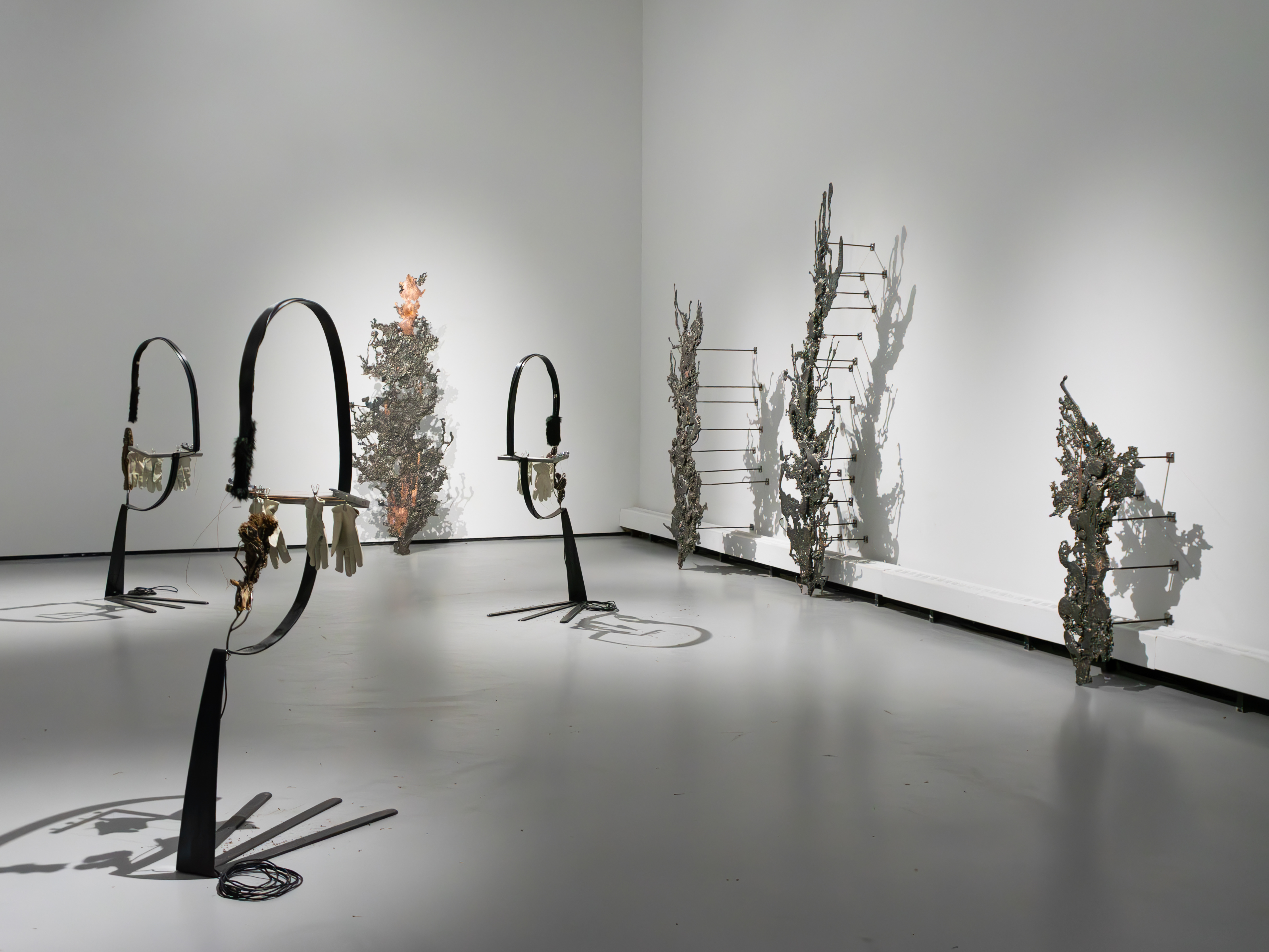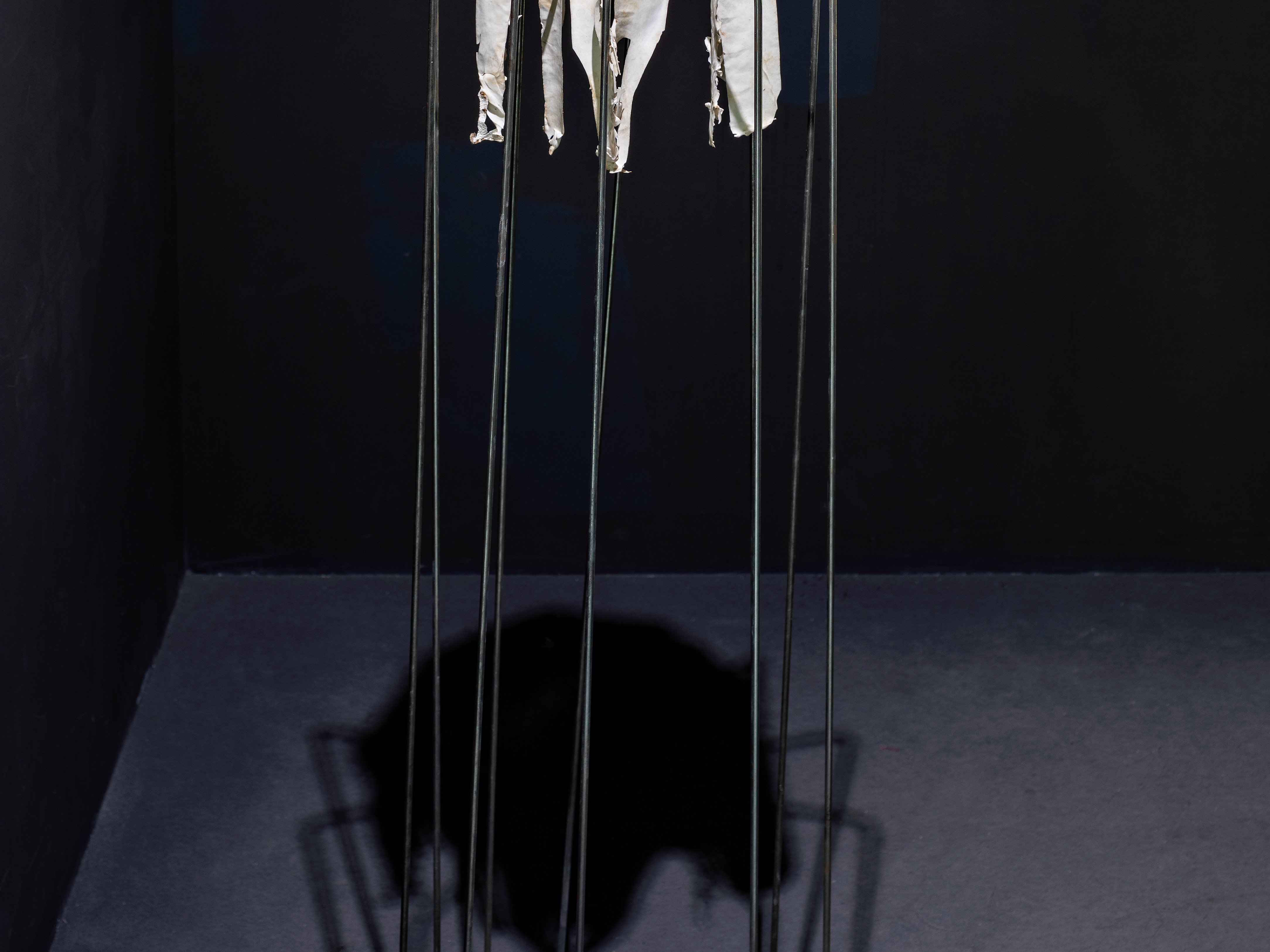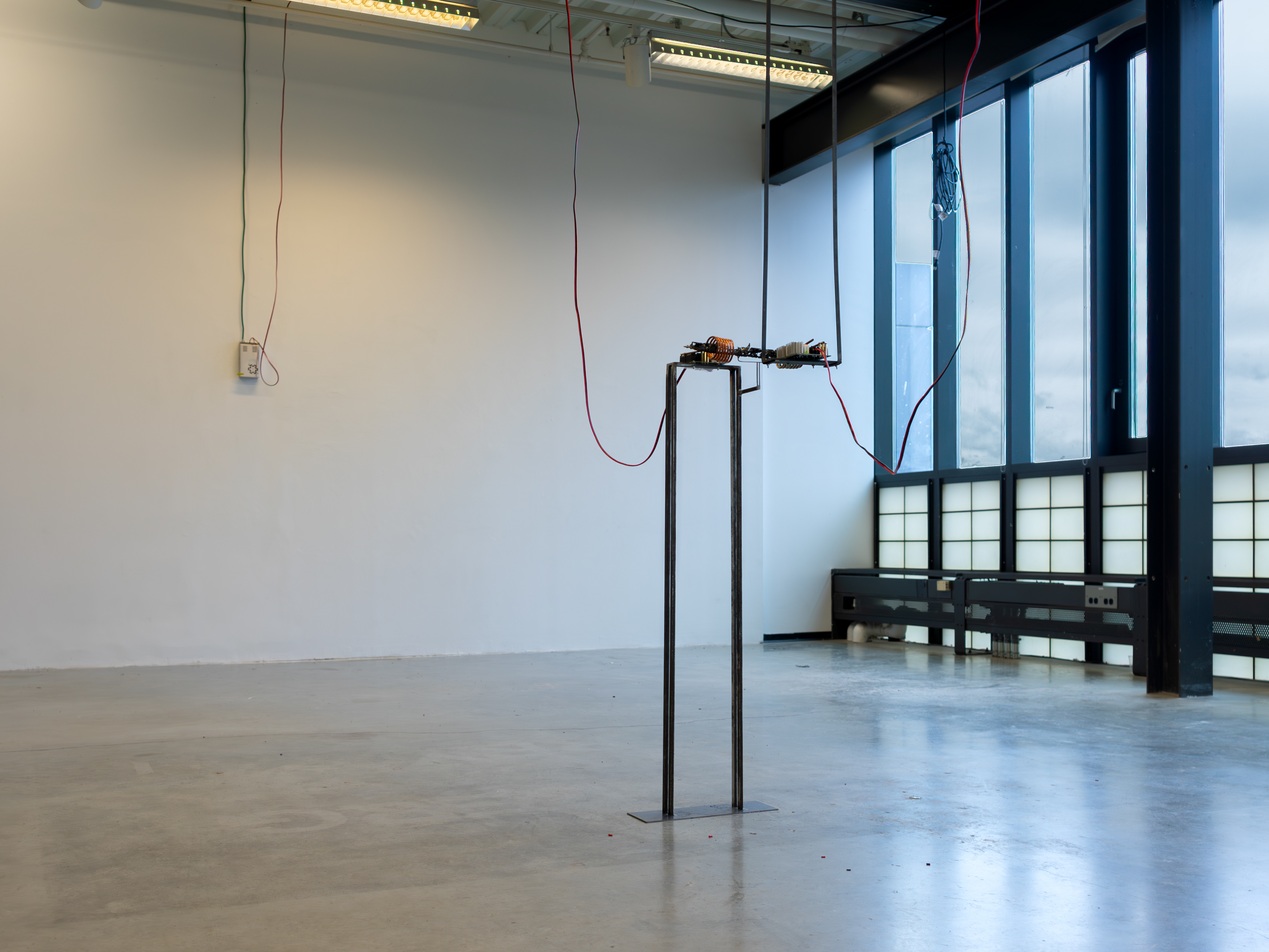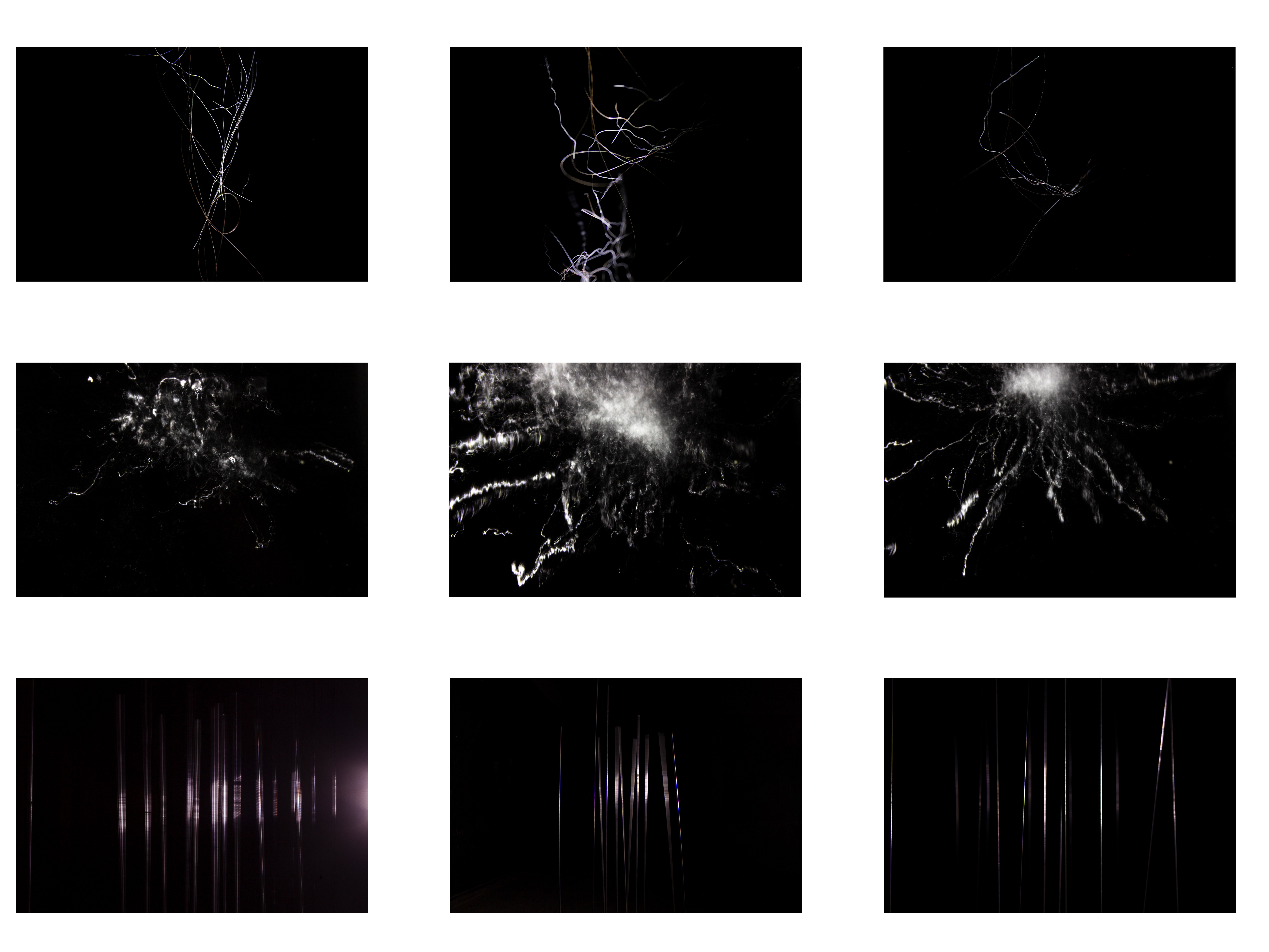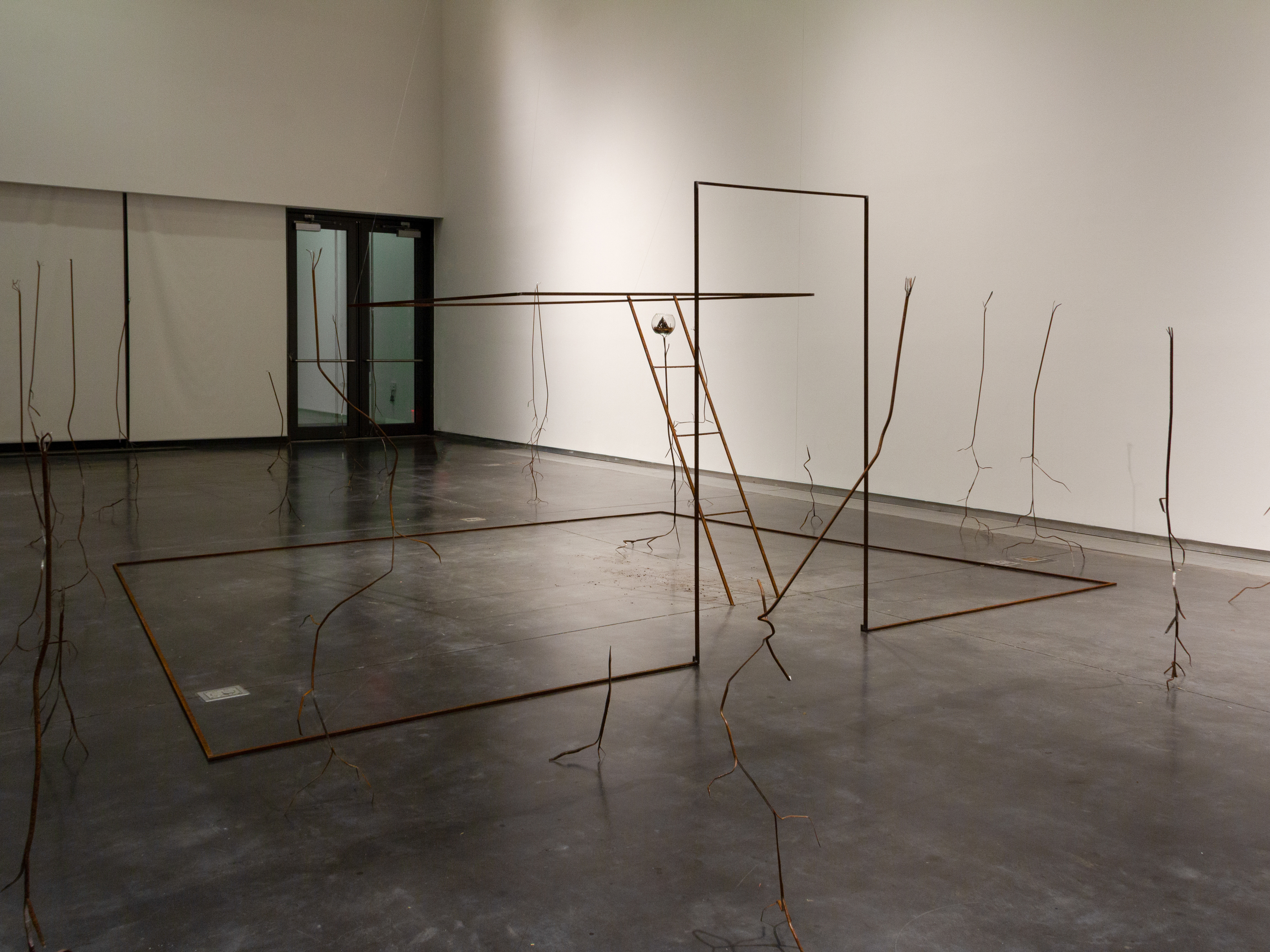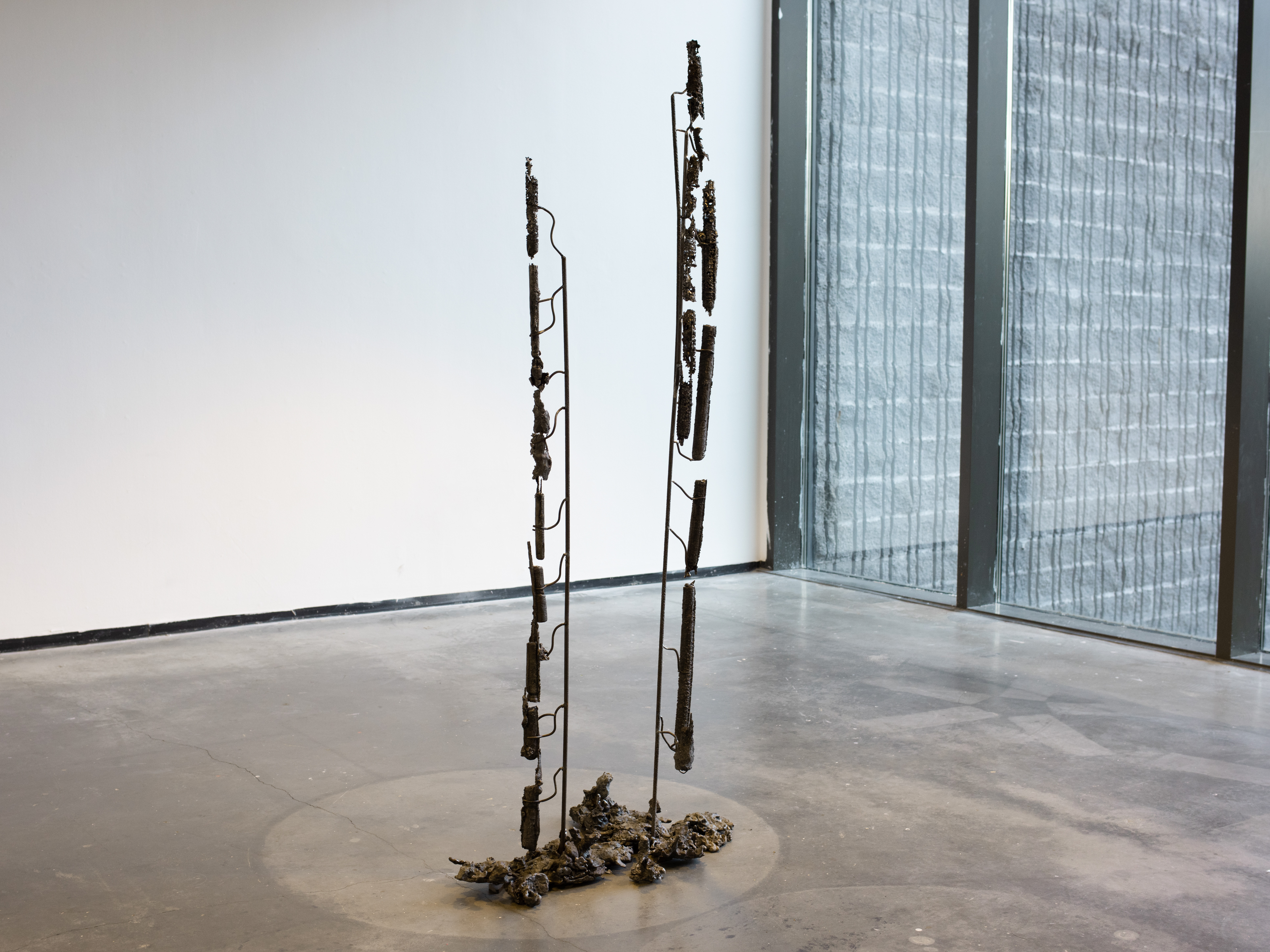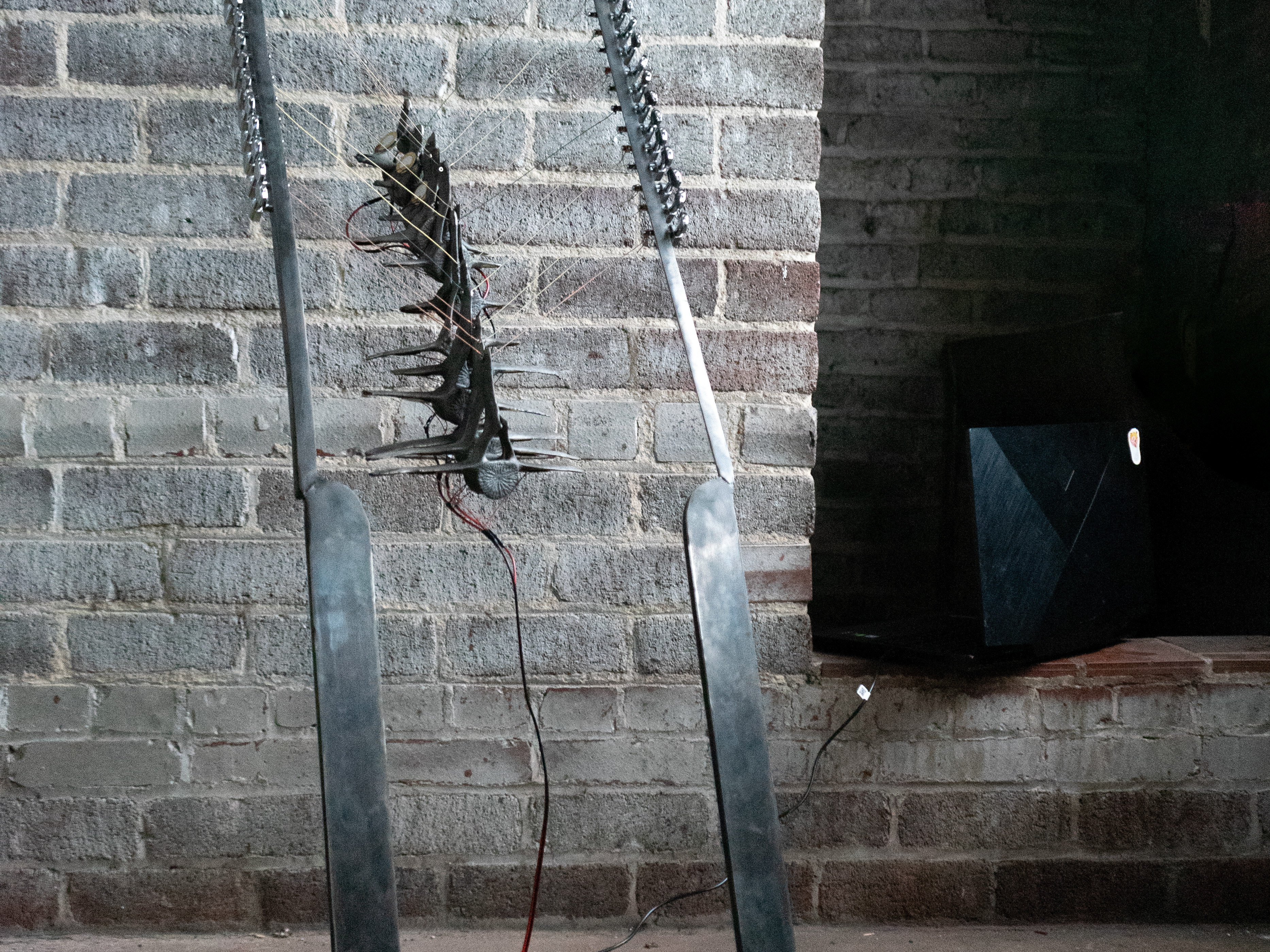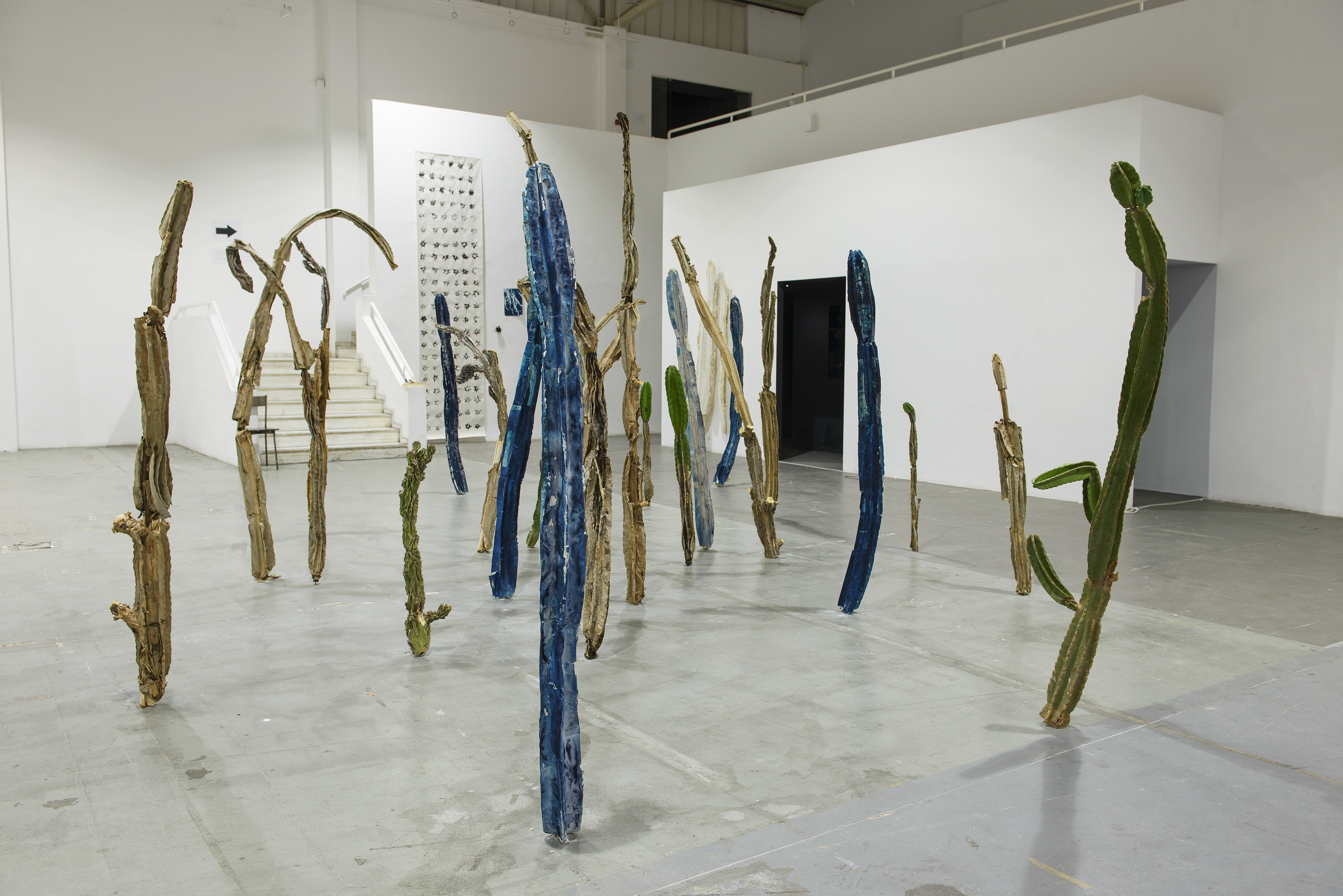
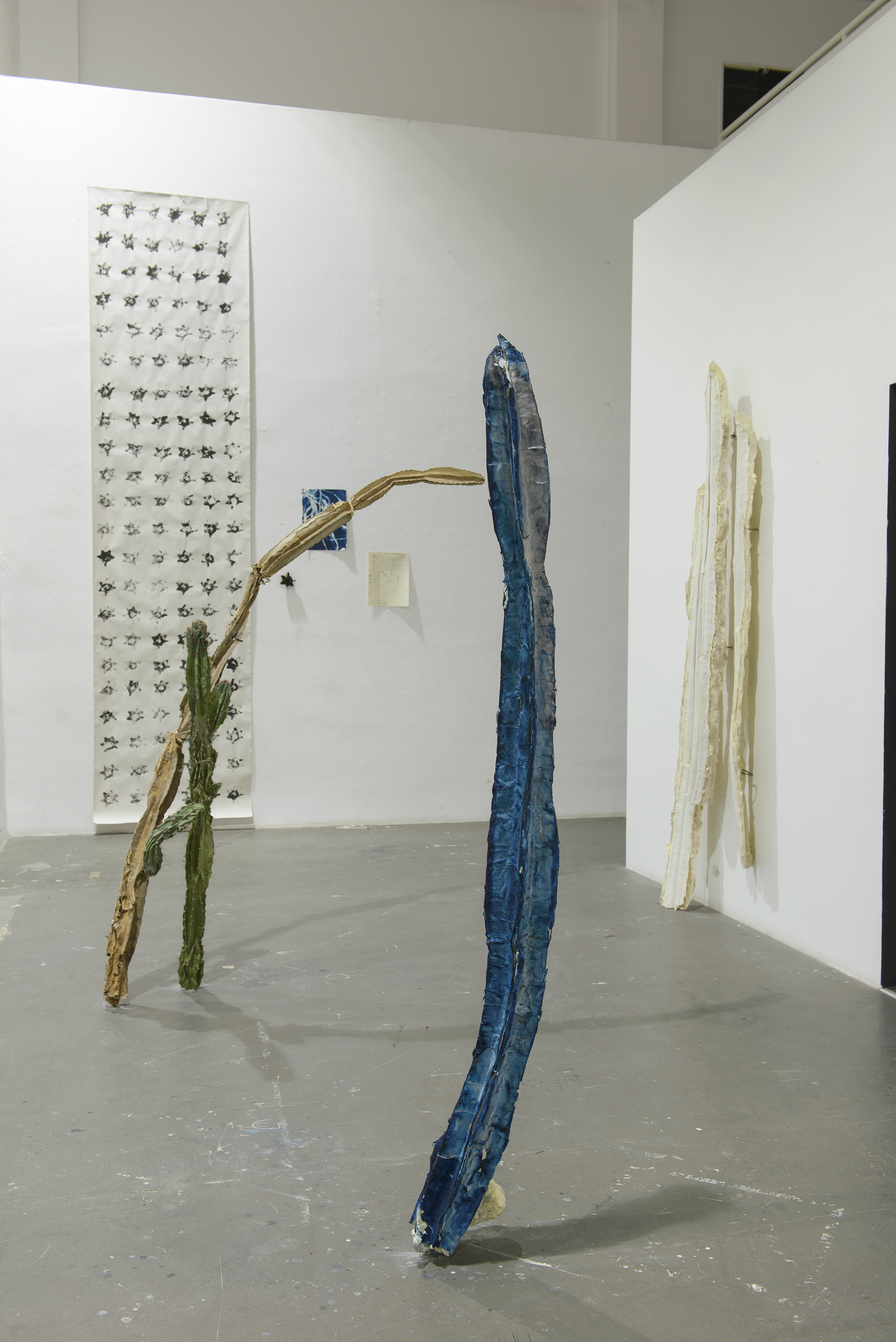
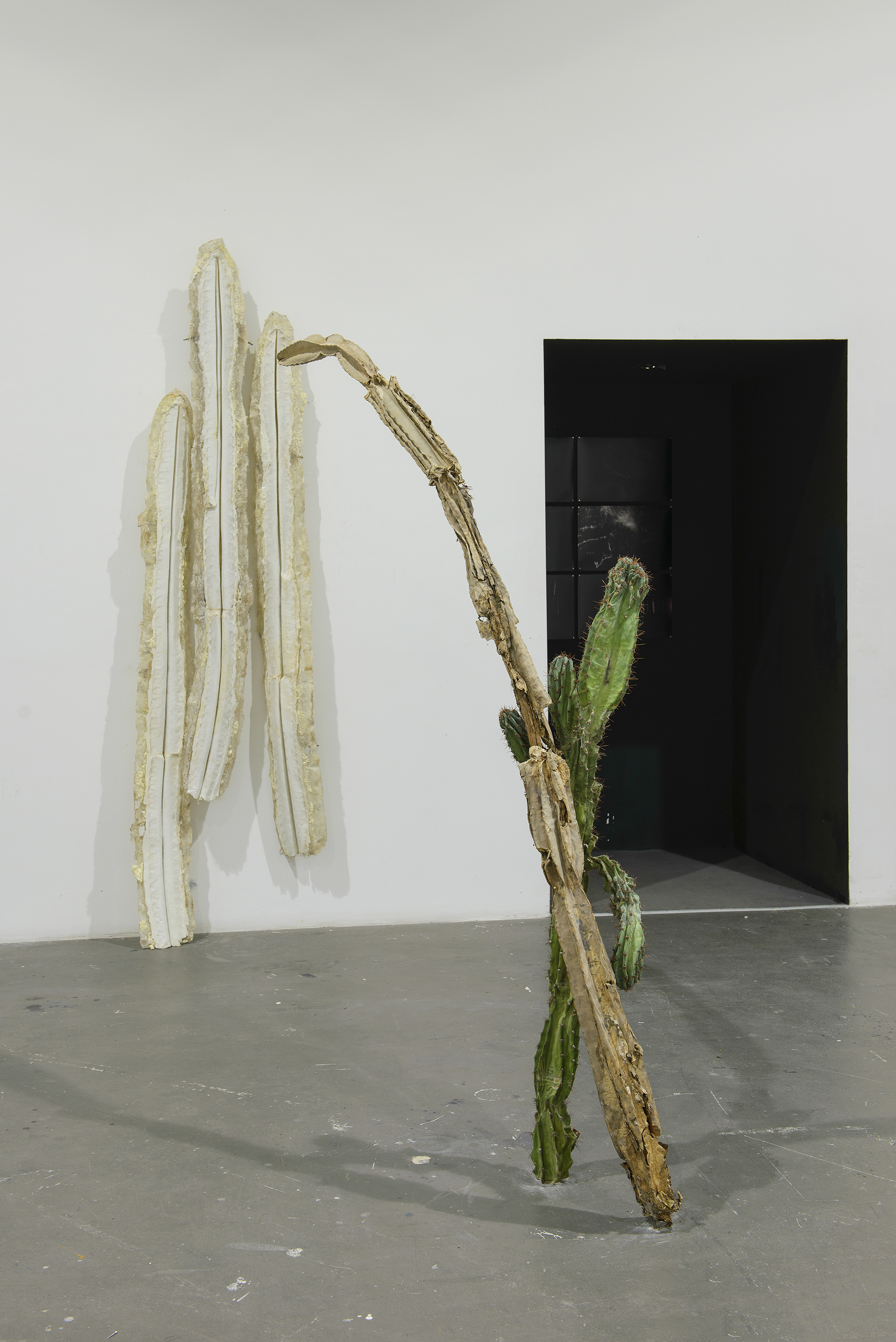
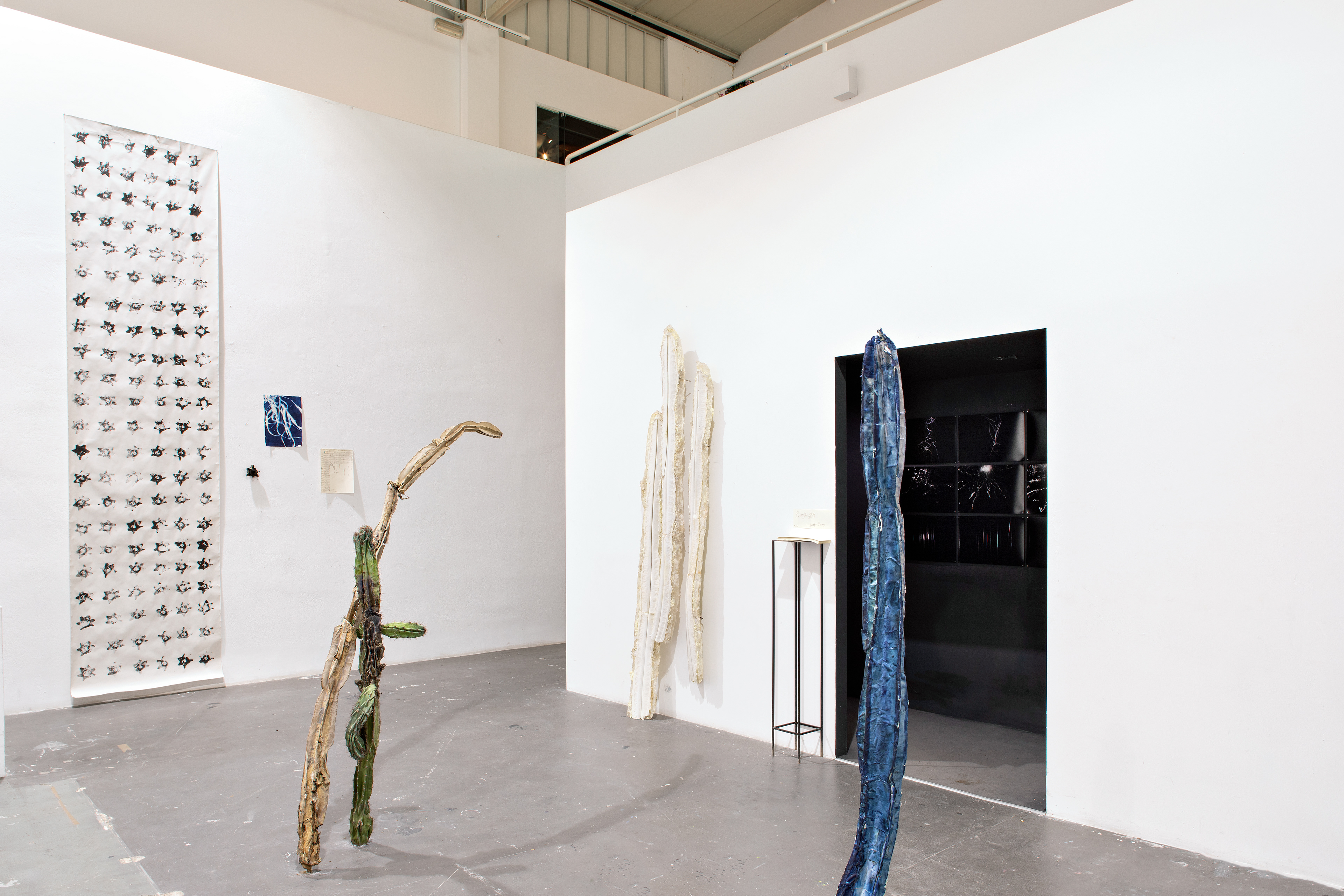
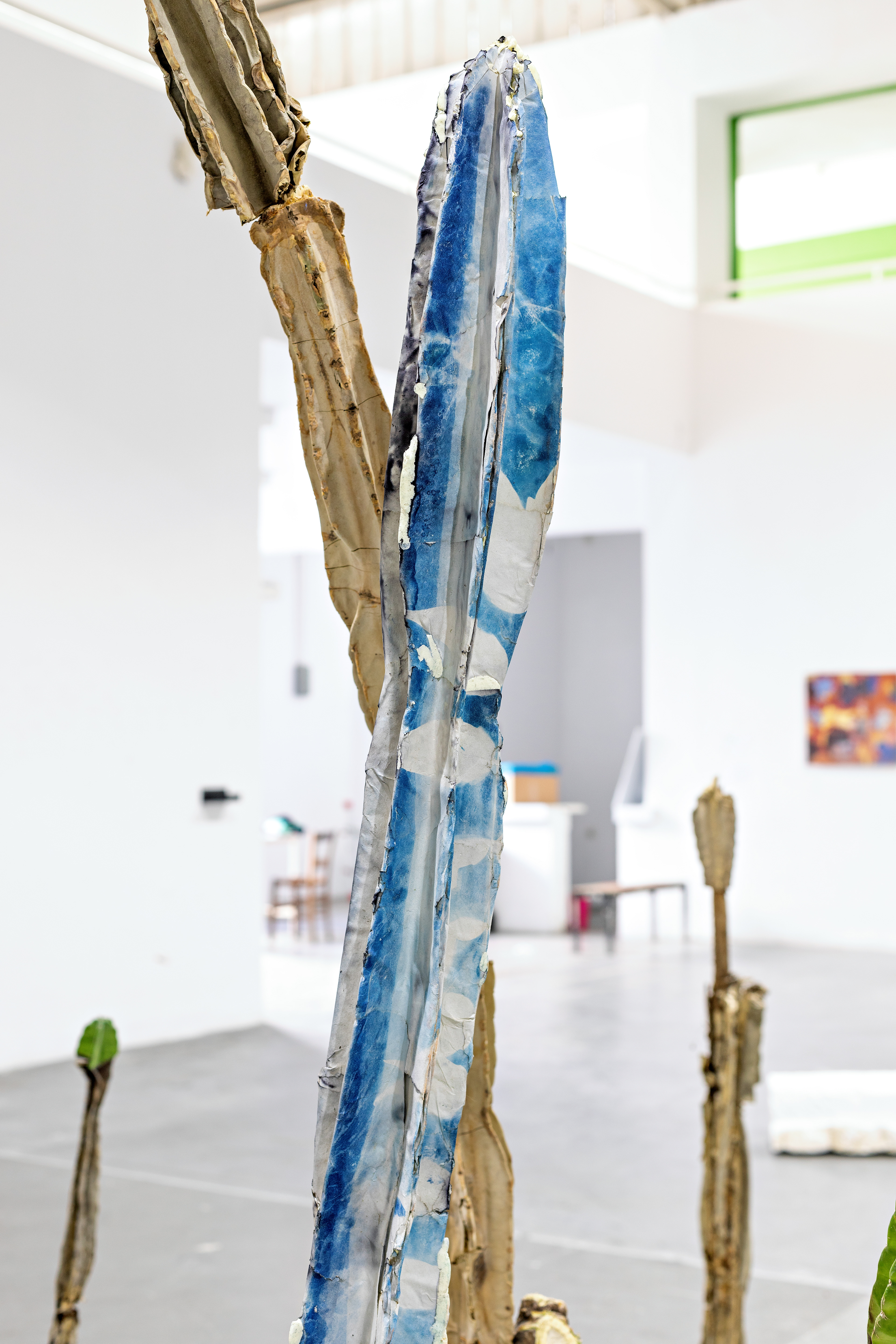

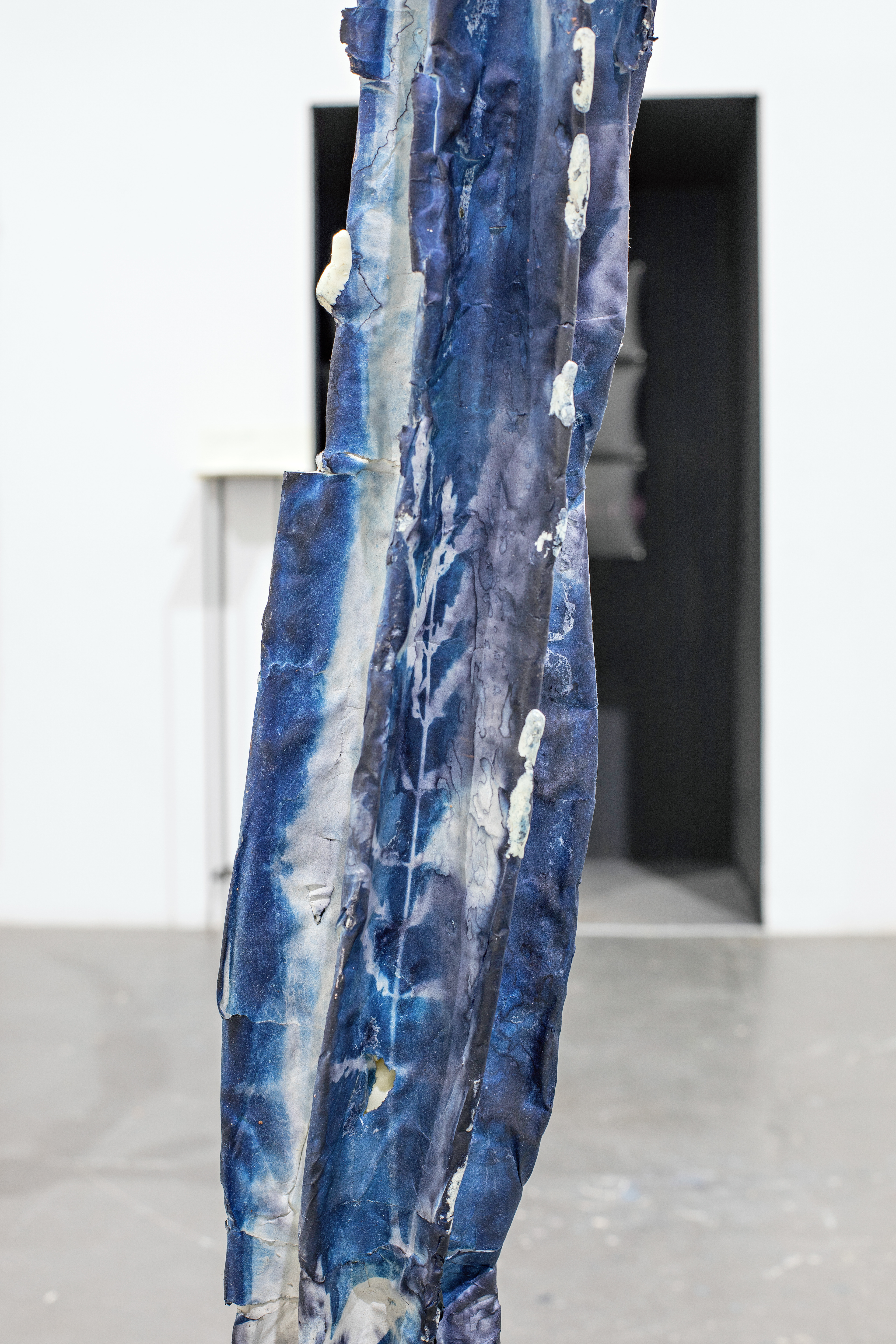
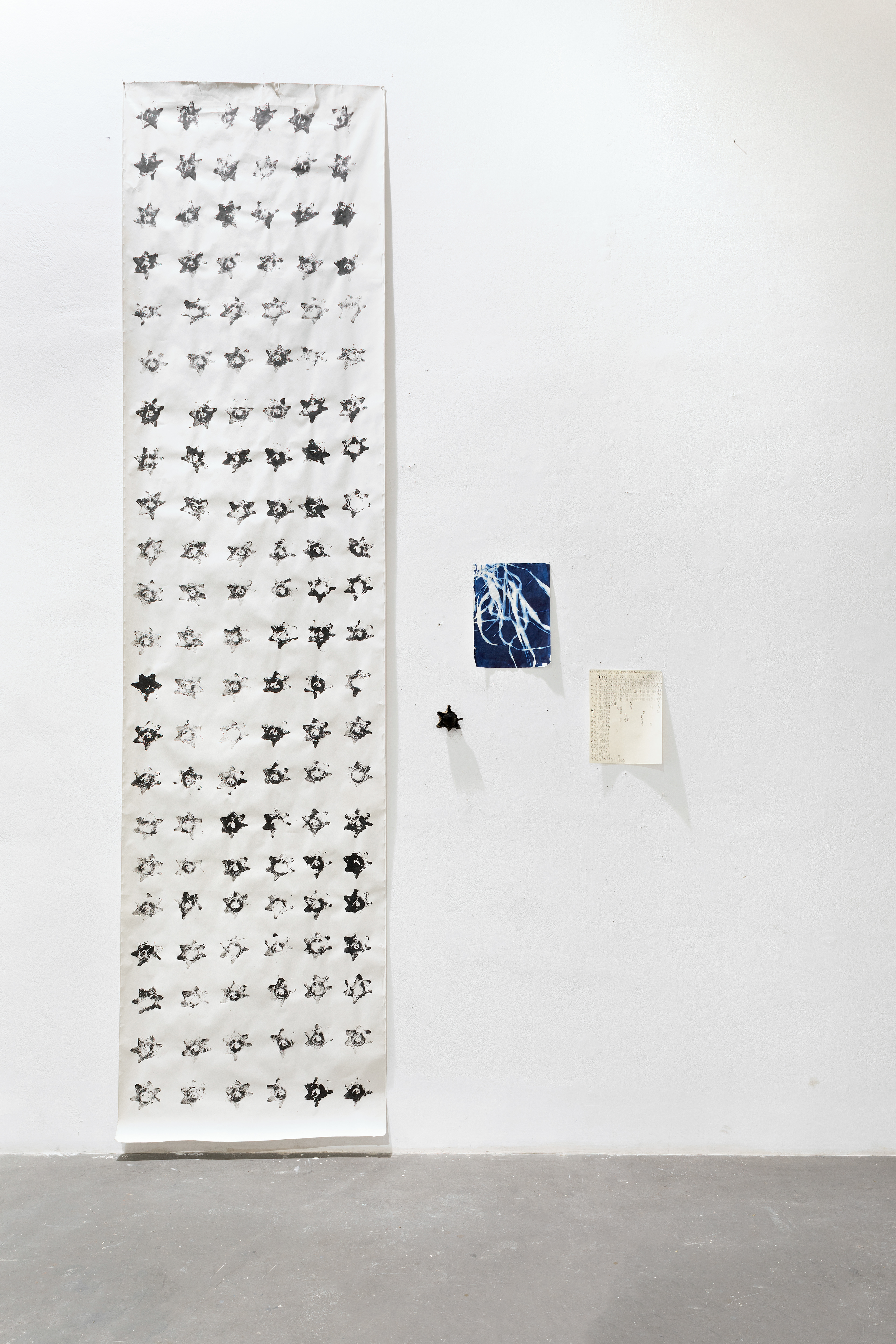
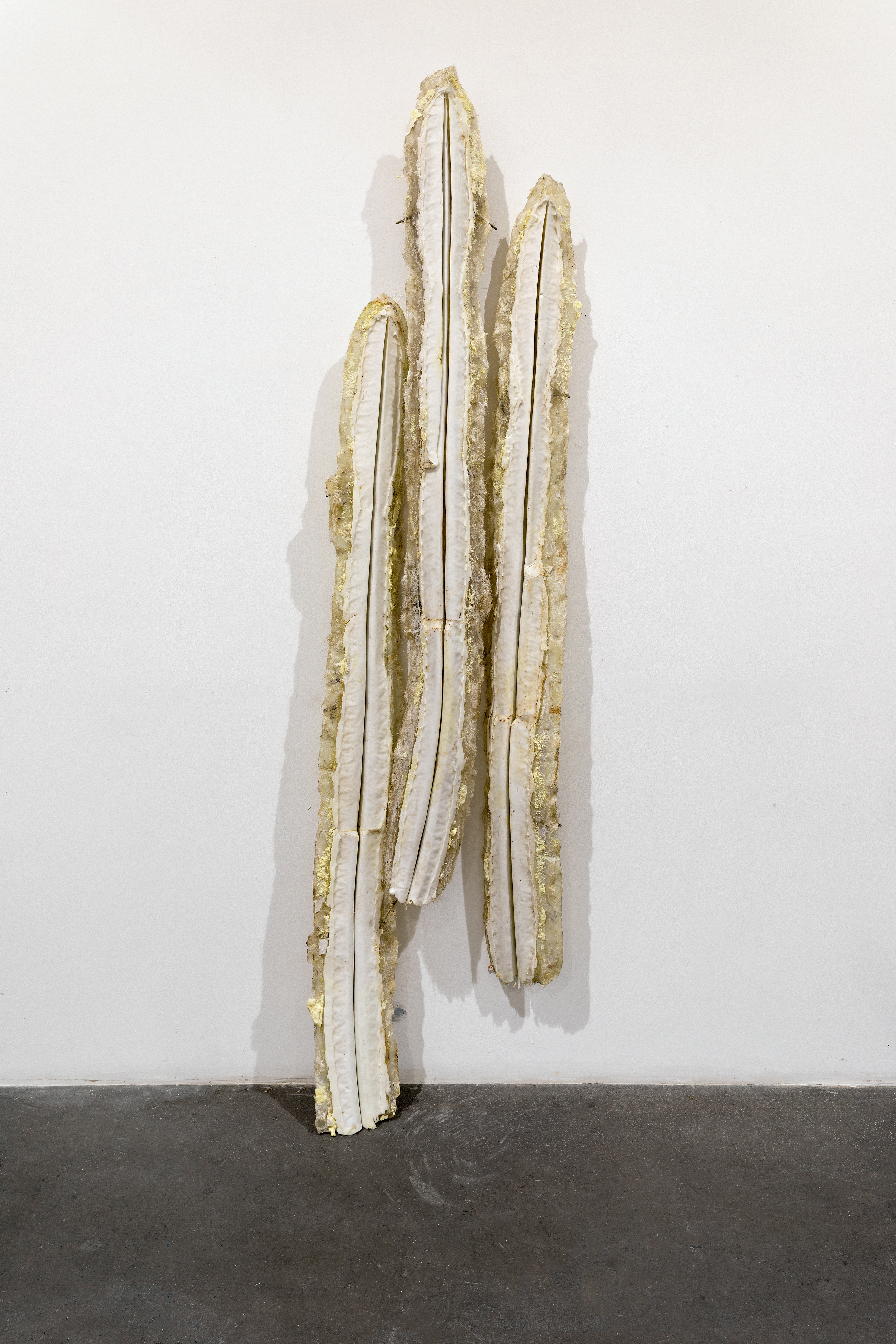
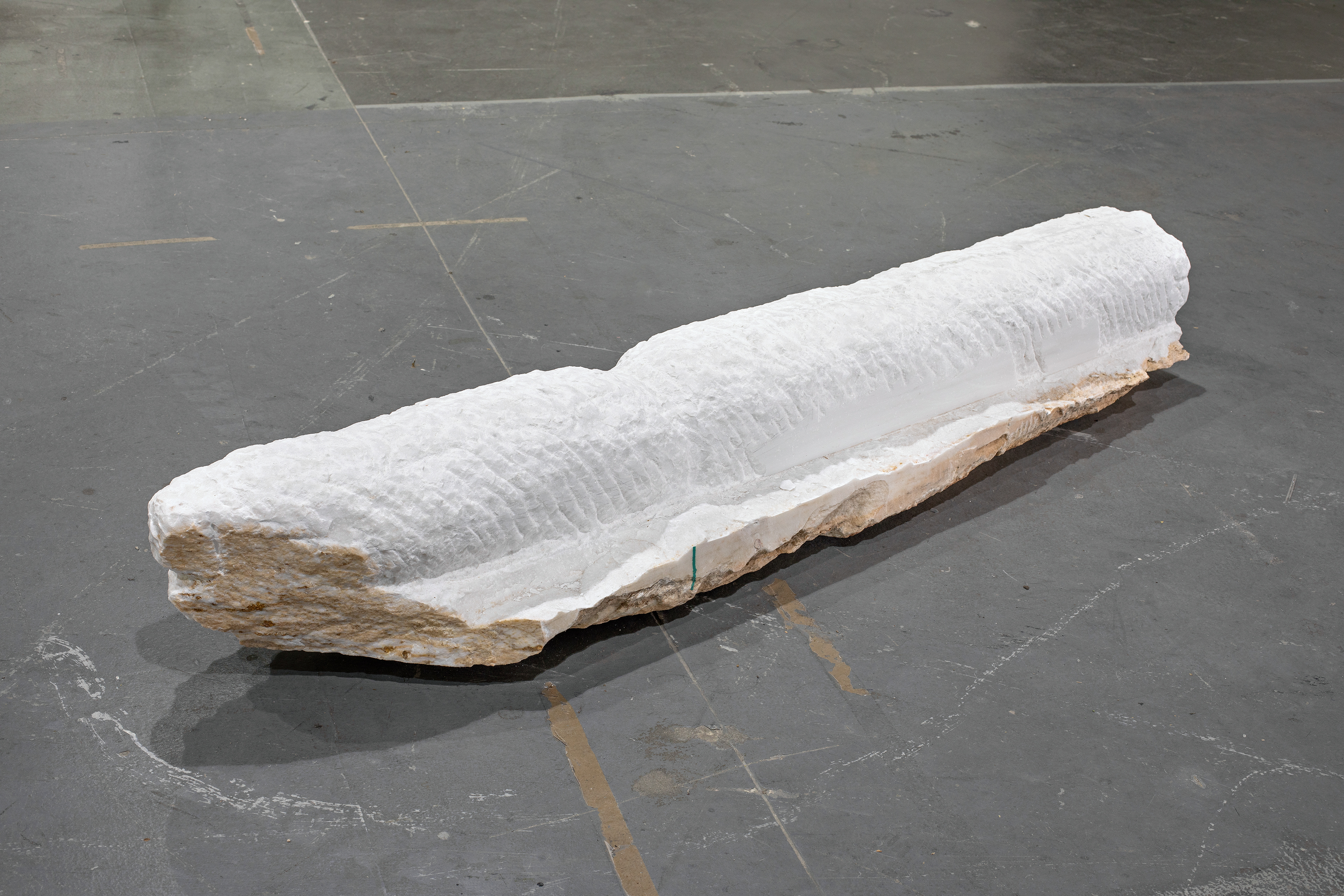
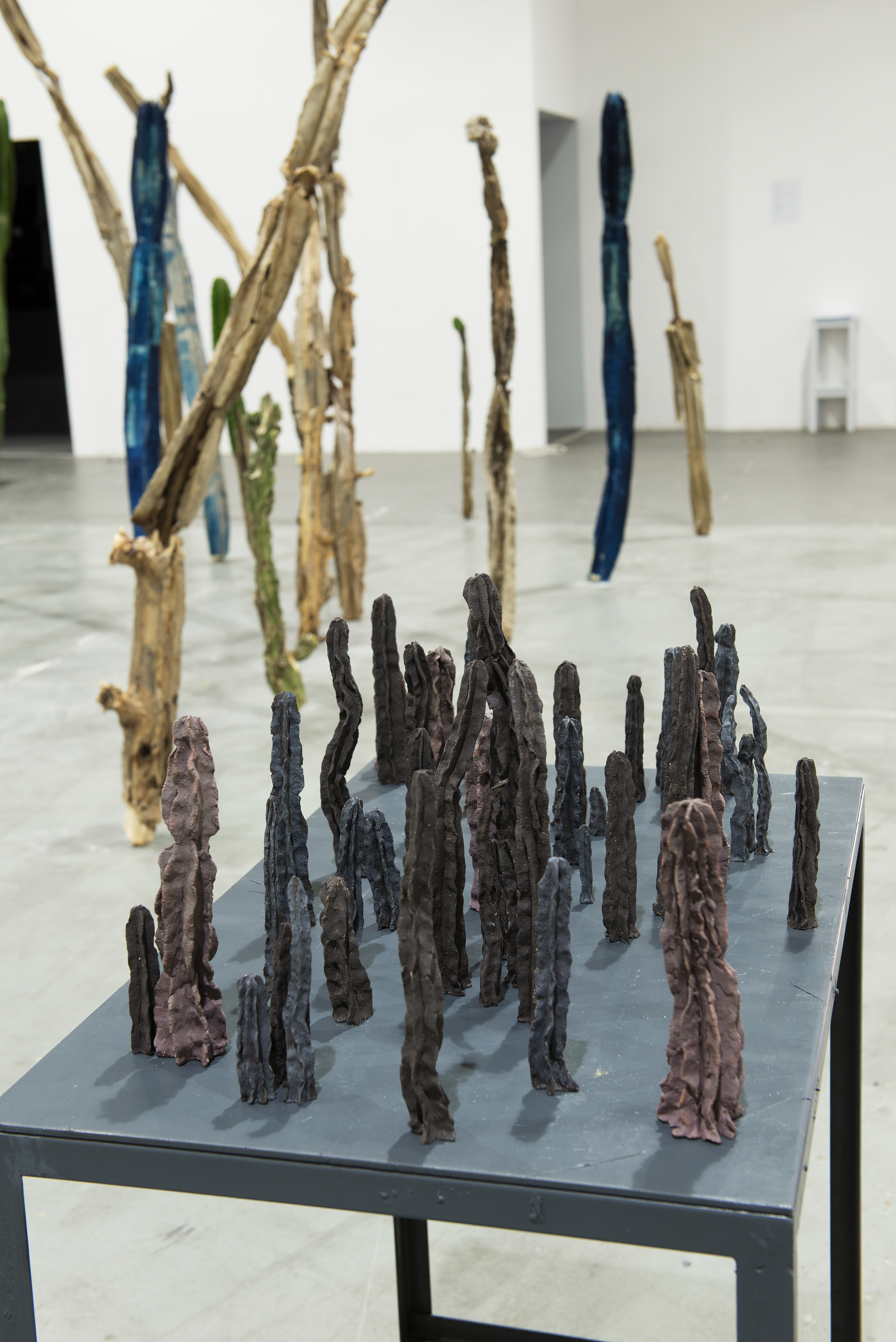
Viewing through Unfolding
2020
Materials: Cacti (alive, dead, paper) Cyanotype prints
This sculpture installation was presented for my degree show and consists of multiple sculptures. this is the text that was handed out during the presentation:
Deleuze, refers to the fold as a form that expresses torsion of matter and soul, and space and time. If the fold is what determines and materializes Form, the unfold is the continuation or the extension of its act.
My interest lies in the change of the point of viewing of self, at any time and place, a continuous observation of conscientious transpositions in artistic practice.
From the crowd of cacti to the light and from the light to the imprints on the surface of the cacti and with constant observation, this artwork unfolds consecutively until there is no end or beginning.
The main idea of the installation was sculpture. Working on the main element, the cactus -which in my mind is the plant equivalent of a person, in that it has a spine, flesh and skin, it protects itself yet it provides life to its whole ecosystem, and can live without a root system for an incredible amount of time since it is able to absorb water through the atmosphere- I decided to construct an artistic method through which I was able to practice sculpture in a study-like manner. The initial idea appeared when I felt an internal transition from the unit to the crowd. My sketches started to shift, and figures started to come together in a crowd. So, I decided I needed to create one. My interest in art lies in the constant observation, in a conscientious transposition of the point of view from that of the act, to the observer and then to a third point where one can perceive the previous two. This ability of constantly being able to view things in different aspects is the form of my thought and has everything to do with space, therefore sculpture.
The main element of the installation is the Crowd. Cacti alive, dead and sculptures were placed standing, leaning against each other and forming a crowd that people walked through, examining the cacti, discovering their own relationship with these human figure-like plants. I molded these paper cacti and then by using a 19th century printing technique called Cyanotype, I imprinted on the six cacti made of paper, images of plants, leaves and MRI and CAT scans of human body parts such as a brain, a neck and a spinal cord. This procedure functions as an artistic substitution of the natural process of photosynthesis. The sculptures were imprinted through the use of direct sunlight, as a result, the parts most exposed to the sun got a darker blue shade than those in the shadow. When the Installation was set, the cacti were placed to face the same direction. These cacti embody every notion of my artistic practice and are complete sculptures.
360 view
